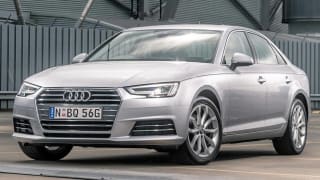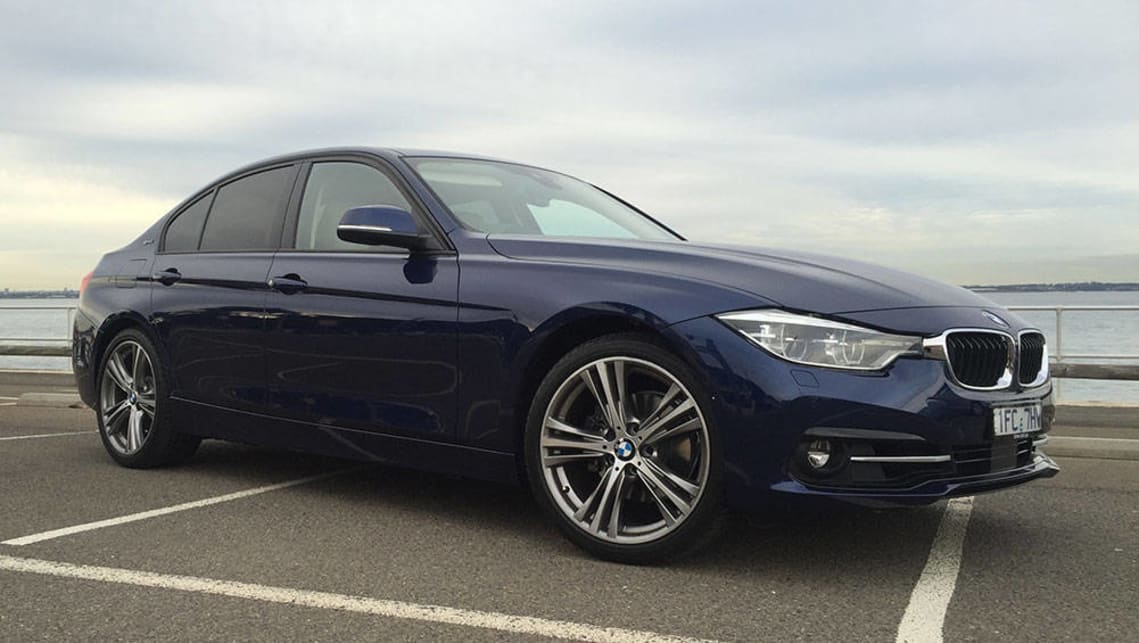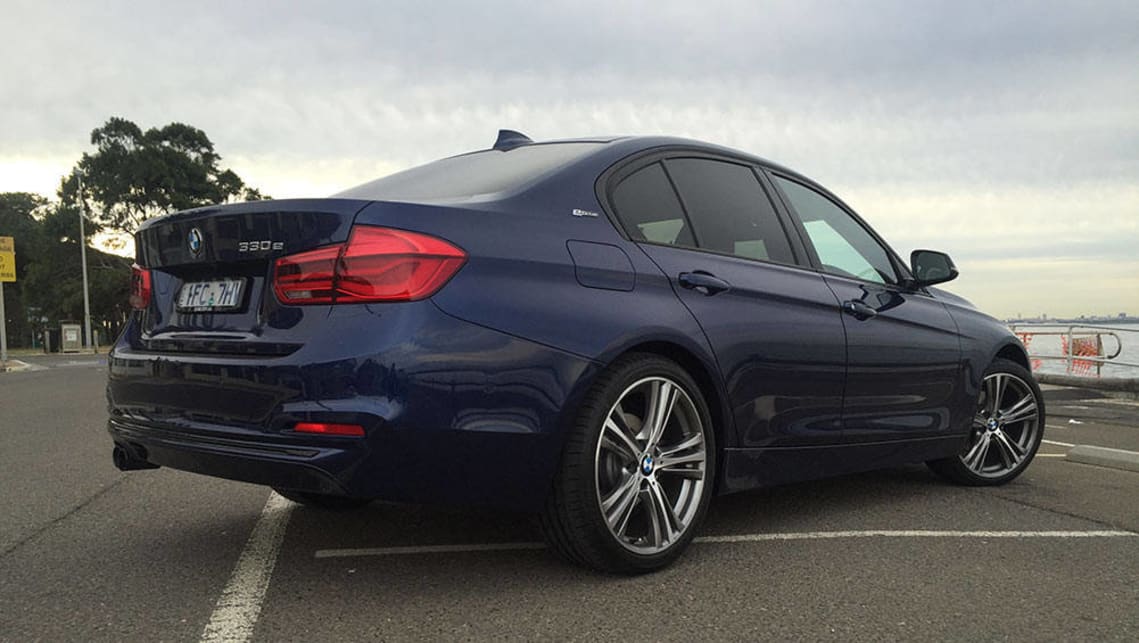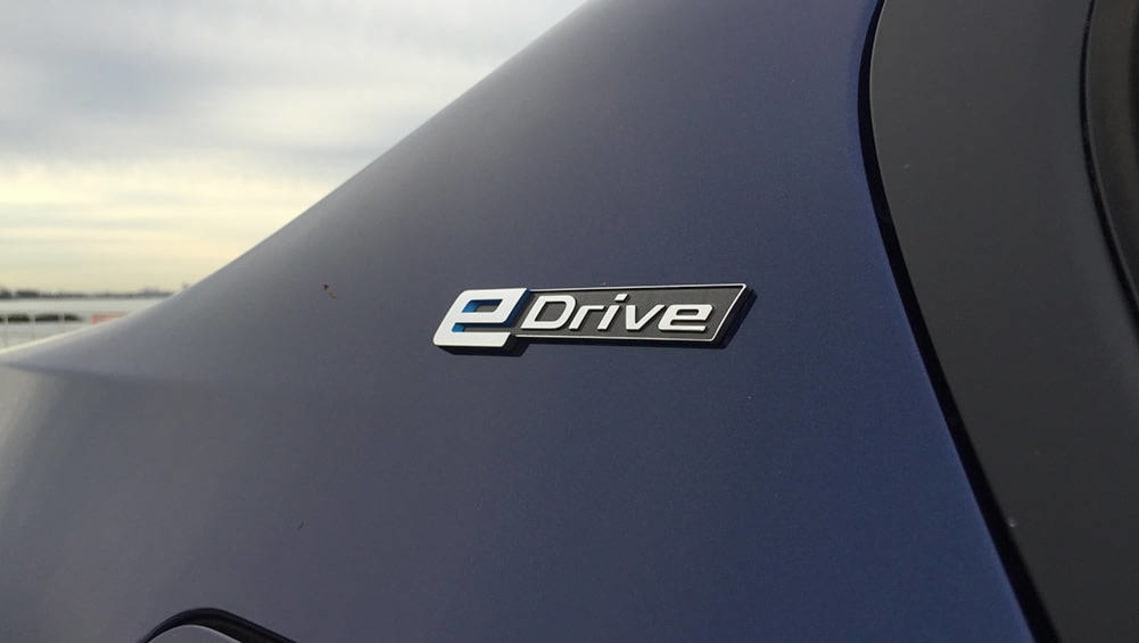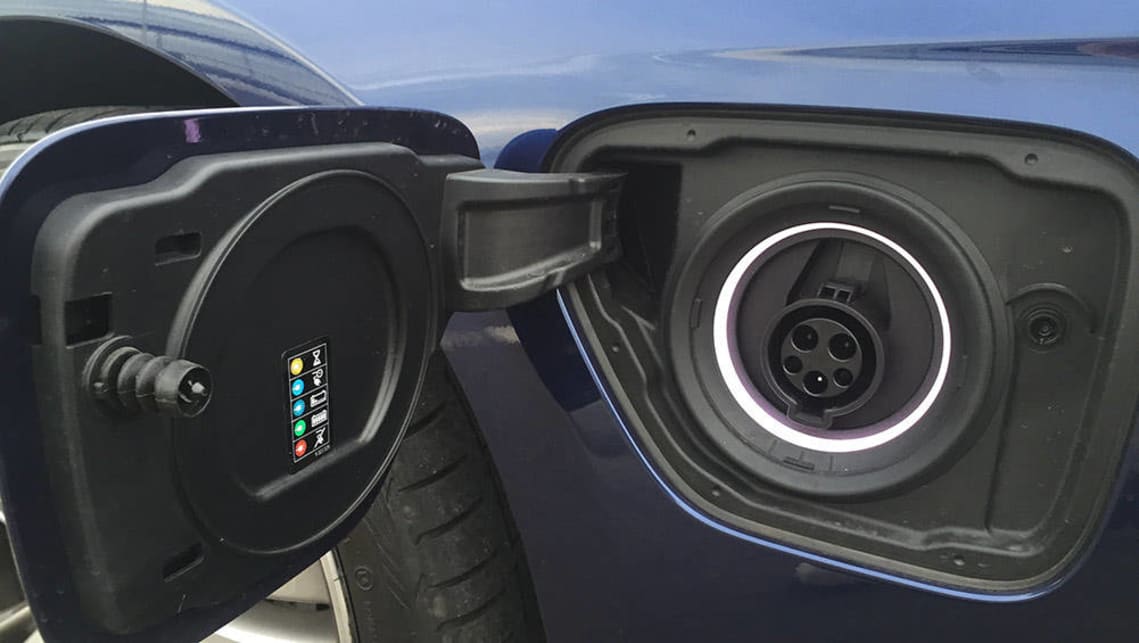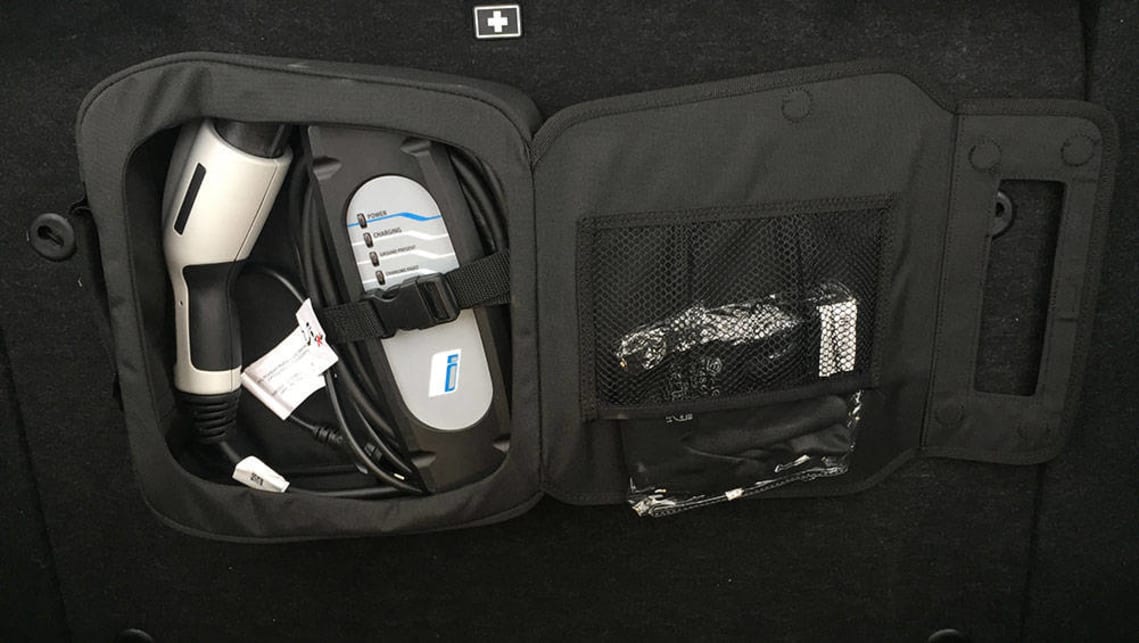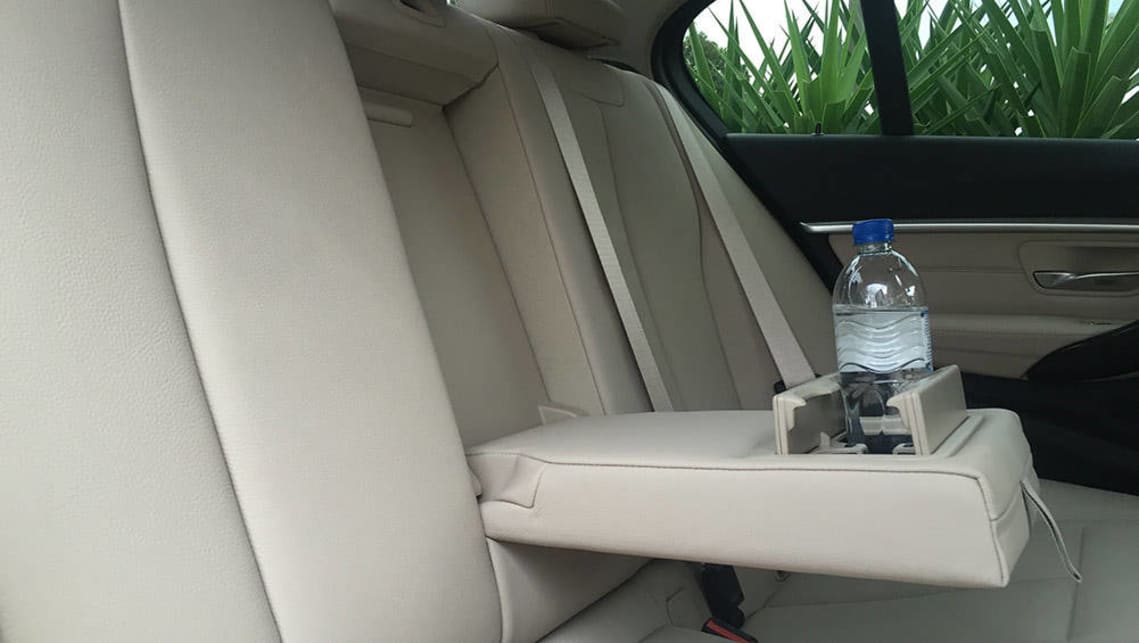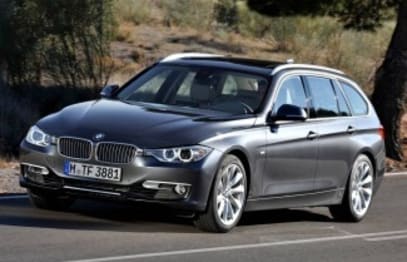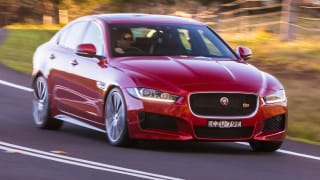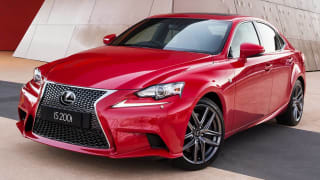Being a hybrid no longer immediately signals that a car is boring (behold the Ferrari LaFerrari, McLaren P1 or BMW’s i8) and we also know they’re no longer automatically ugly (Toyota's Corolla and Camry, Audi’s lovely A3 e-tron).
Time and technology are marching in the hybrid’s direction and it seems that punters are starting to make quiet enquiries about ‘normal’ cars having a bit of EMF to go with their ICE.
BMW’s 330e is a follow up to its 3 Series Active Hybrid and arrived along with the hybrid X5, the 40e.
Both are part of BMW’s iPerformance range, and given the ‘i’ designation after a number in its model range means petrol (330i) and an i before a number means whacky-looking attention-grabber (i3, i8), the ‘e’ means electric.
When you’ve acquired the taste for electric motivation, you’ll find it’s quite addictive – quiet, smooth, fun.
Priced basically the same as the fast-selling 330i M Sport, the 330e is already a more compelling proposition than the car it replaces.
Price and features
The $71,900 price tag almost matches the petrol-only 330i M Sport, the single biggest-selling single model in the 3 Series range, and a very fine car indeed.
Standard are 19-inch alloy wheels, LED headlights, reversing camera, front and rear parking sensors, up-spec satnav, keyless entry and start, remote app integration with dual-zone climate control for pre-conditioning, auto headlights and wipers, leather trim, heads-up display, six-speaker stereo with Bluetooth, USB and DAB+ (as well as some phone app capability such as Spotify, but still no CarPlay/AndroidAuto), 8.8-inch colour screen, cruise control and telematics.
The BMW Remote app also allows you to check the car’s state of charge, which is especially useful when it’s plugged in at a public charging point.
Our test car also had the mysteriously-named Internet option ($200), which merely provides a SIM card slot for internet connection, Connected Drive Freedom ($429), Comfort Package, which includes lumbar support and heating for front seats and a sunblind for the rear window ($1885), sunroof ($2920!), Harmon Kardon sound ($1900), interior trim wood and metal option ($800), Innovations Package, which adds active cruise with stop and go and auto-parking ($2444), metallic paint ($1840!!) and the Visibility Package, which adds adaptive headlights, headlight washer system and rear window tinting ($2366). All that adds up to a rather grand total of $86,684.
Engine and transmission
BMW’s modular 2.0-litre four-cylinder twin-scroll turbo nestles under the bonnet, joined by an electric motor fitted between it and the ZF eight-speed automatic. The petrol motor is a tweaked version of the 320i’s, with the same 135kW but 290Nm of torque, a bump of 20Nm.
The electric motor adds 65kW and 100Nm to the party and also offers an ‘overboost’ function, which means the torque can briefly punch up to 250Nm for a quick jolt of acceleration.
There are three EDrive modes – Save, Max and Auto. Electric-only speeds range up to 120km/h, but you won’t get very far on battery only.
Together, BMW says the outputs amount to 185kW and 420Nm. For the EV nerds, the battery is a 7.6kWh unit with a net usable 5.7kW/h.
Fuel consumption
BMW claims a mightily impressive 2.1L/100km but nobody is silly enough to actually believe that. The super-short distance ADR test is responsible for such a figure. On six of our seven days testing we attempted to get away without charging the car’s batteries, and we got a respectable 6.8L/100m, which included a long run up to Sydney’s Blue Mountains.
For the return to BMW, we charged the car overnight (full charge arrives in just over three hours from a standard 240V domestic socket), with a claimed range of 32km showing on the dashboard.
Design
Looks like a 3 Series, is a 3 Series. There are some small detail changes, like a couple of E Drive badges, an extra fuel flap in the front left guard for the charger and that’s about it. The only other clue is the 330e badge, which got a few double takes.
Inside there’s even less to suggest that this the hybrid, with just an extra button behind the gear selector marked E Drive. Simple, unfussy, as it should be.
The 3 is a very well-designed car inside and out but the exterior in particular is starting to look its age. The LED headlights give it a lift – as do the standard 19-inch alloys – and there’s no denying that its overall proportions are bang-on.
The interior remains as good as ever, but is in danger of being overtaken by rival Audi in terms of design, materials and general classy feel. A really nice touch on this car is the blue LED interior lighting when you unlock the doors, which looks stunning, and Tron-like, at night.
The standard steering wheel, while perfectly functional, is rubbish and plasticky and should immediately be replaced with the optional M Sport tiller. It’s worth the extra outlay of $2000 for the M Sport package.
Practicality
You have to put the batteries somewhere, and in this case they’re under the boot floor, which obviously costs you. The power pack robs the boot of 110 litres of space (370 vs 480) but as far as the actual usable space goes, it’s not hugely smaller in the real world and will only trouble recreational packers. Slinging the batteries under the car rather than in the rear seat backs, as Lexus does with some of its hybrids, means you can still drop the seats for extra load space. Wise move.
The cupholder tally is four, with a pair up front ahead of the gear selector and behind a small storage bin. The rear cupholders are found in the armrest and each door can hold a small bottle. There’s also a small storage bin under the centre armrest where your phone can live while plugged in.
Driving
If you weren’t paying attention, you’d be hard-pressed to know you were in a hybrid. Jumping into it from a petrol-only car and pressing the start button resulted in a brief moment of confusion – the dashboard lights up but the engine doesn’t start and the initial movement us under electric power only. Pure silence.
For most of our time with the car, we avoided plugging it in. Previous experience with the supercar i8 suggested this wasn’t required, but in reality, even in start-stop traffic, you won’t get much charge from either coasting or the regenerative braking. It’s difficult to get the charge much above 15 percent, which won’t get you very far, but does provide a foot-flat boost to acceleration. 0-100km/h is a still quick – and very smooth – 6.1 seconds.
Despite what BMW says, the configuration of the i8 is quite different to the 330e’s. Like the Audi A3 etron, the energy recovery – in any mode – is not even slightly aggressive, whereas the i8’s is rather more interested in harvesting power.
The knock-on effect of this is that because the batteries steal space for the fuel tank, you’ve only got 41 litres to burn, which is 400-odd kilometres worth when you go without charging.
Powering up the batteries it is hardly a chore if you’ve got a garage with a power point - and you wouldn’t buy this car if you didn’t - so you should get the full benefit of the hybrid powertrain, including markedly better fuel economy.
When we had to return it to BMW, a 12km trip through city traffic, we plugged in overnight, took a deep breath and pressed the EDrive button. This meant electric-power only, and a self-imposed rule of not letting the petrol motor to kick in.
Being Sydney, someone had sneezed and our path was blocked by the resulting gridlock, meaning an 8km detour. The 330e passed the EV test with flying colours and we didn’t feel the need to hypermile it, we just drove as we would in a petrol car, with the occasional overtaking burst to get around dawdling buses and in-car makeup artists.
We arrived with 10km to spare, suggesting an effective range of almost 25km, particularly handy if you’re an inner-city dweller. You really could EV commute each day, at least in one direction. And the petrol motor didn’t start once.
When you’ve acquired the taste for electric motivation, you’ll find it’s quite addictive – quiet, smooth, fun. Couple that with the Sport Line’s excellent ride and handling mix and this is a hybrid without all the compromises we’ve come to expect. It’s certainly a lot prettier than a Prius.
Safety
Six airbags, ABS, blind spot sensors, audio pedestrian warning, brake assist, traction and stability controls, lane-departure warning with passive steering assist, forward collision detection, autonomous emergency braking.
The 3 Series has long-held a five star ANCAP rating, the maximum available.
Ownership
The standard BMW warranty is three years/unlimited kilometres with roadside assist for the duration.
BMWs all tell you when they need a service, something the company calls Condition Based Servicing. A five year/80,000km service plan is available for $1340, which includes an annual check, oil and brake fluid changes and spark plugs. A plan that extends to brakes, clutches and wiper blades is available but is between you and your dealer.
The lithium-ion battery pack has its own six-year warranty.
